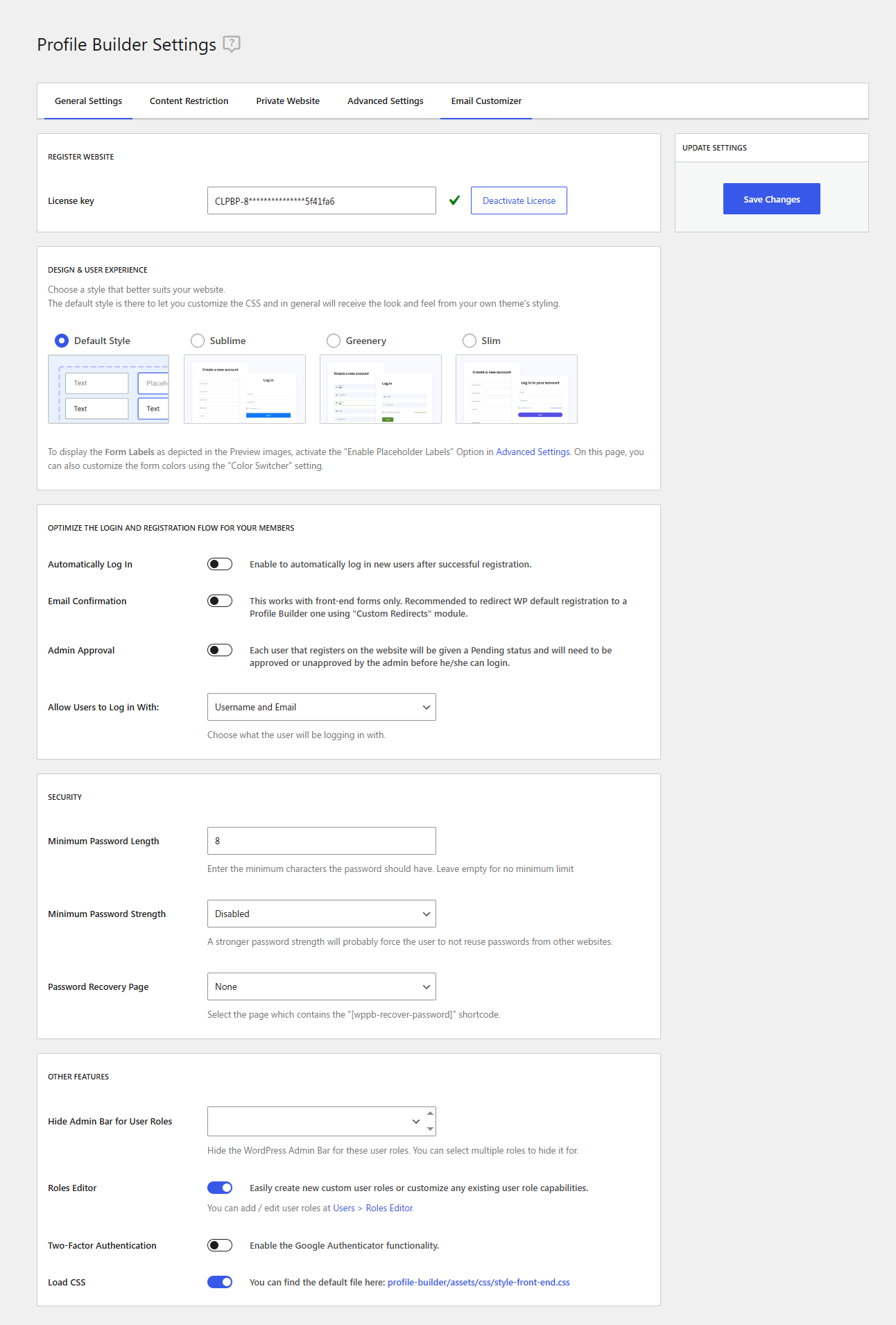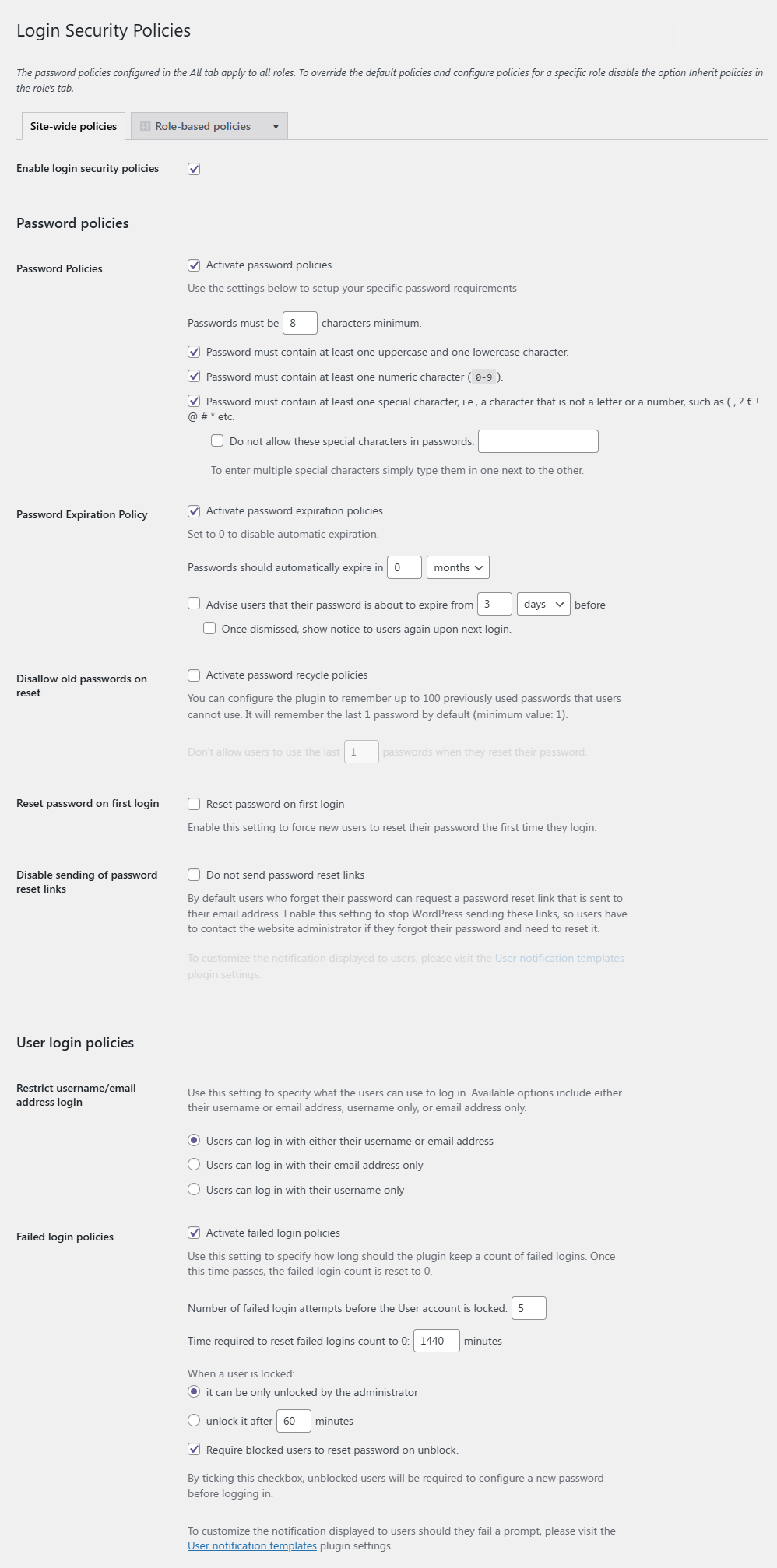Your WordPress login page is like the front door to your website. Your dashboard, content, customer data, and store orders can all be accessed through it. By default, this login page can be found on the /wp-login.php slug, which is something hackers are very well aware of.
While this might sound alarming, there is some good news. It only takes a few minutes to protect your login form, and you don’t have to type a single line of code to do it.
In this article, we’ll cover two plugins you can use to protect your WordPress login page and show you how to use them effectively. One improves and secures the login experience for your users. The other locks down access and enforces strong security policies behind the scenes. Together, they give you a simple, effective, and future-proof way to protect your login page.
Why You Should Take Your Login Page Security Seriously
The default WordPress login URL is very easy for bots to scan for and find. And even if you move it to a new URL, there are still ways for bots to get to it. If the bot is malicious, it can try a slew of different attacks to try and gain access, from traditional brute-force attacks to credential stuffing and beyond.
While this is hardly news, many WordPress admins and website owners still do not take steps to reduce the risk of an attack. And with bots and attackers getting more advanced, unsecured login forms are becoming easier to exploit.
Soundcore P30i by Anker Noise Cancelling Earbuds, Strong and Smart Noise Cancelling, Powerful Bass, 45H Playtime, 2-in-1 Case and Phone Stand, IP54, Wireless Earbuds, Bluetooth 5.4 (Black)
$24.99 (as of November 6, 2025 14:17 GMT +00:00 - More infoProduct prices and availability are accurate as of the date/time indicated and are subject to change. Any price and availability information displayed on [relevant Amazon Site(s), as applicable] at the time of purchase will apply to the purchase of this product.)At the same time, we need to ensure that authentic users can log in without too much hassle. It’s all well and good to lock down your login page, but if this causes a ton of friction for your real users, it will do more harm than good.
To this end, we need to ensure that we:
- Make it easy and safe for your real users to log in so they can get where they need to without confusion or roadblocks.
- Make it as hard as possible for bad actors to get access to your user accounts.
So let’s dive in!
Step 1: Use Profile Builder to Build the Login Experience
Profile Builder is more than a login form plugin. It’s a full user management, registration, and user profile customization toolkit. It lets you design and control how people register, log in, and manage their profiles.
Profile Builder Pro
Build a Beautiful Registration & Login Experience with Profile Builder.
You can easily create custom user forms—like registration, login, or profile—that look polished and professional, with no prior coding skills.
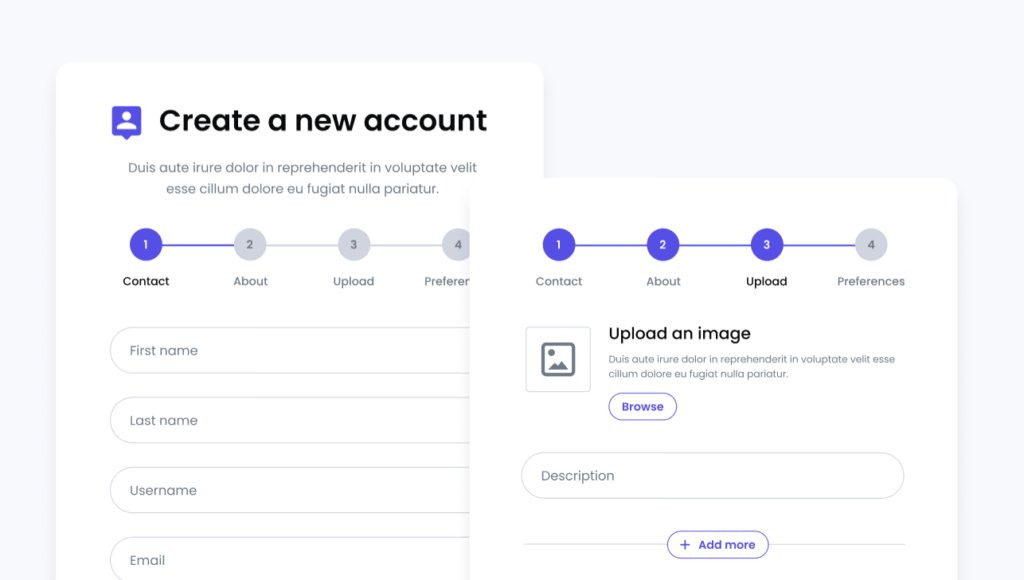
It also includes a number of security-focused features that make this plugin a must-have if you want your users to have the ultimate login experience.
Security Features
Profile Builder comes with the following security features that you can implement on your website once the plugin has been installed, including:
- Two-Factor Authentication (2FA): Add an extra verification step to every login. Even if a password is stolen, it’s useless without access to second factor, like a linked email account.
- Password requirements: Set minimum password length and strength for when your users create their accounts.
- Admin approval: Review and approve each new user account before they can log in.
- Email confirmation: Require users to verify their email address to activate their account.
- reCAPTCHA support: Stop bots and automated scripts from submitting your forms.
- Role-based content restriction: Limit what logged-in users can see based on their role.
Usability Features
To balance things and make sure usability does not suffer, Profile Builder includes the following features to help you ensure processes continue to run smoothly without compromising on security:
- Custom login, registration, and password reset pages: No more generic WordPress forms; customize the looks and behaviour of all your user forms to your liking. Use pre-built templates or start from scratch.
- Drag-and-drop form builder: Choose from 50+ custom form fields to add to your forms and collect exactly the information you need from your registrants.
- Front-end profile editing: Create account or profile pages and let users update their details without entering the WordPress admin.
- Shortcodes and blocks: Easily place user forms anywhere on your site, whether you use the Gutenberg block editor or the Classic one.
Where to Start
To begin, simply download Profile Builder for free from your WordPress dashboard, or check out the premium plans here if you are looking for full customization control.
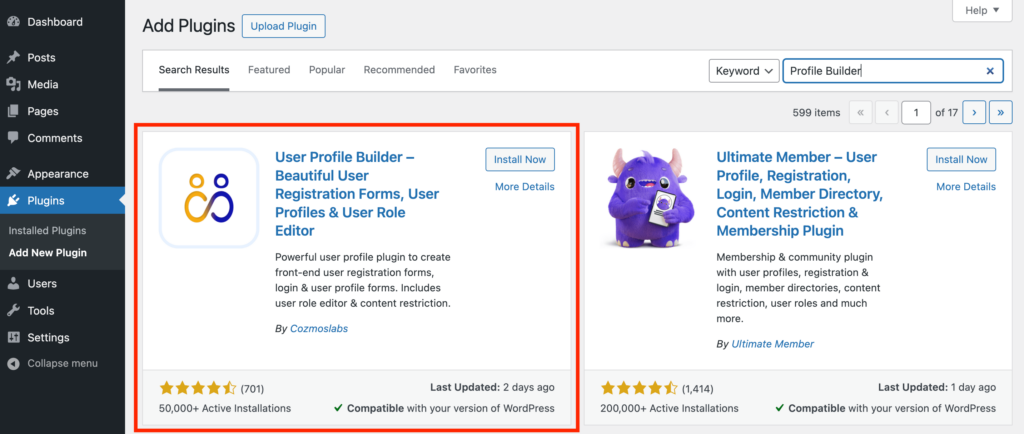
Once active, you can start setting up your user forms straight from the Setup Wizard. You can enable and edit your new user pages that will be automatically added to your site.
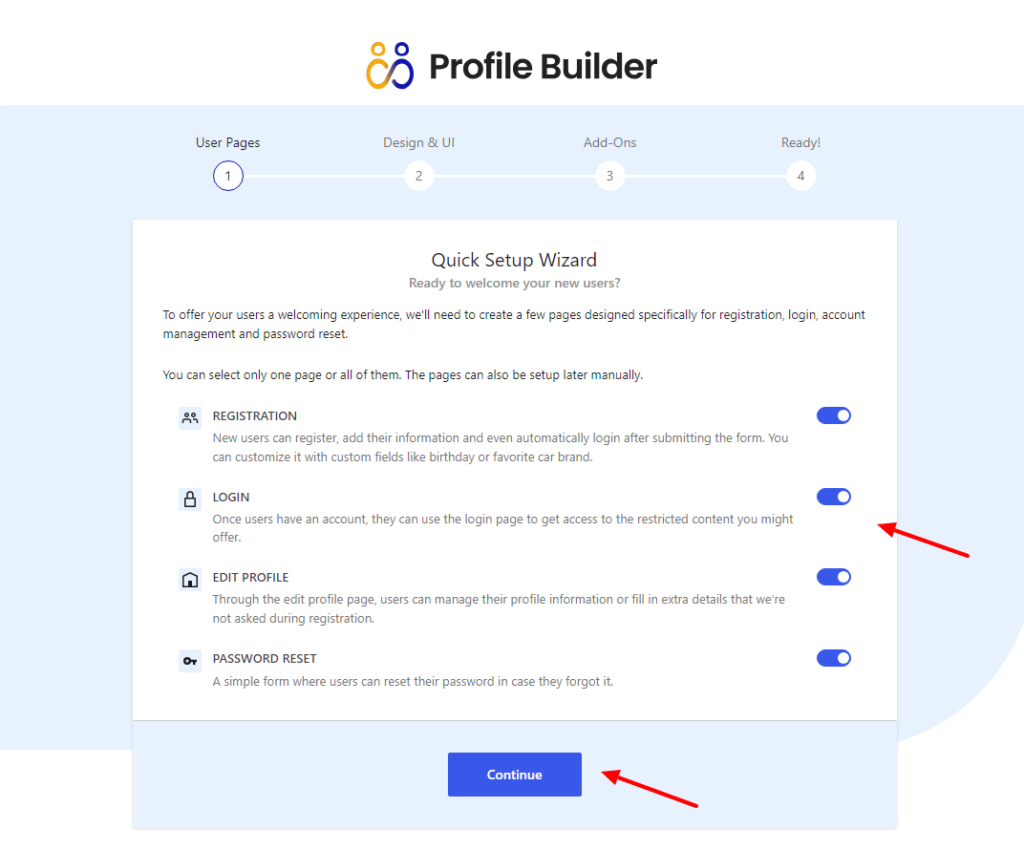
You can customize your registration flow, and even choose a pre-built form template design if you opted for a premium license.
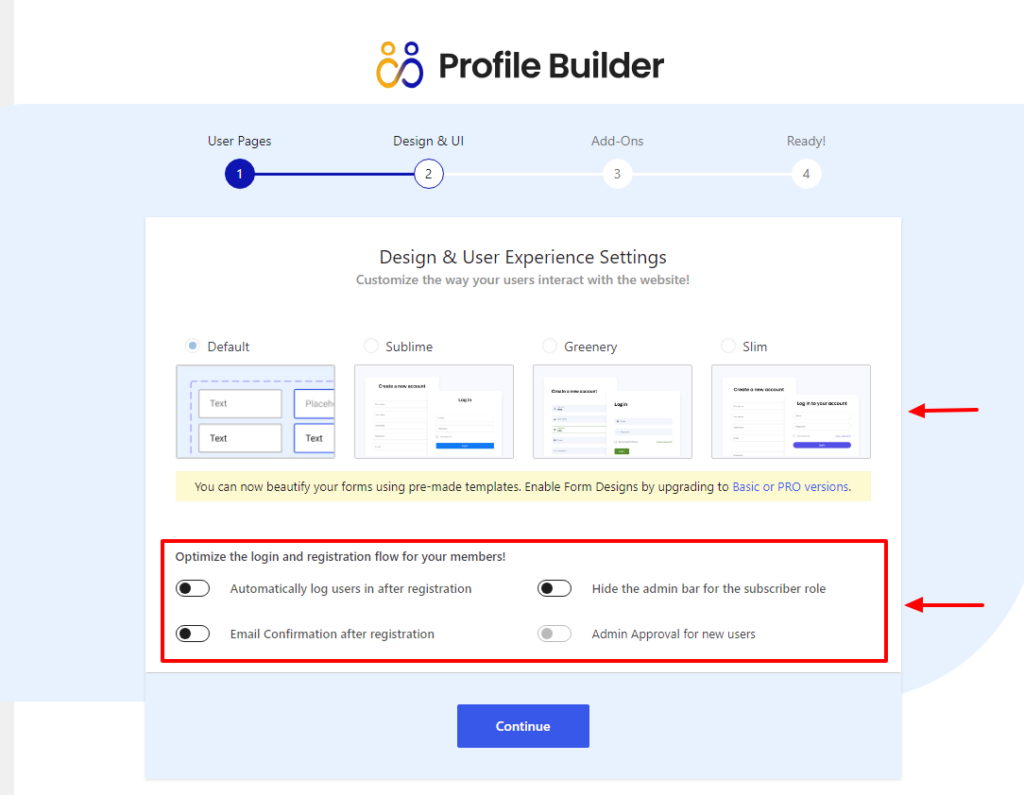
Then, you can move on to customizing the form fields you want to show in your user forms. Go to Profile Builder → Form Fields, and start adding the fields you need.
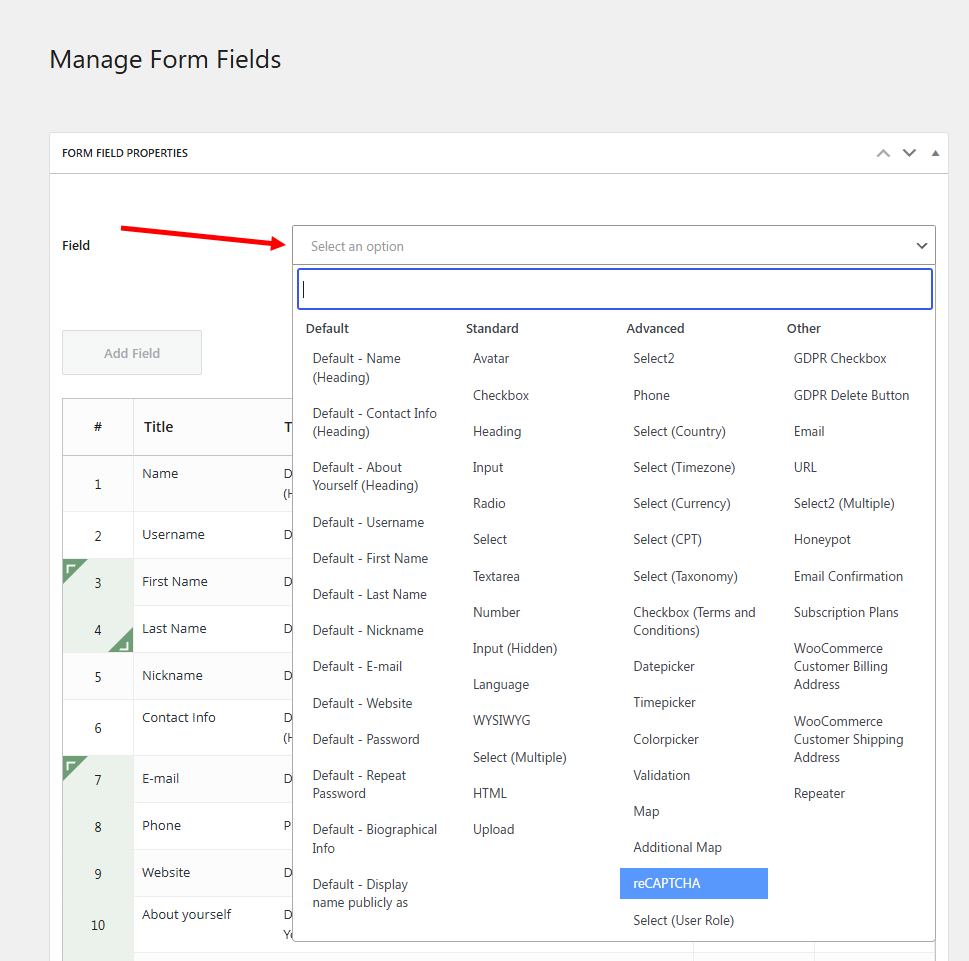
Keep in mind that some of these are only available with a premium license. However, if you do purchase one, it doesn’t just unlock extra fields. The premium plugin comes with much more extended functionality through additional add-ons. For example, you might want to set up custom redirects after login or registration, build user directories, or enable social login.
In the end, you can enable the basic security features I mentioned above by going to Profile Builder → Settings.
Step 2: Use Melapress Login Security to Enforce Strong Login Security Policies
In an ideal world, we would ask users to use strong passwords, use a password manager, and follow other important security best practices, and they would simply comply.
This isn’t the reality we live in, though. Users will reuse passwords or share their passwords with someone to give them access to their accounts, just to avoid extra work.
This is why using a WordPress login security plugin like Melapress Login Security is so important. It takes the onus off the user and ensures best practices are followed without requiring manual intervention every time.
Security Features
Melapress Login Security offers customizable security policies that you can set up per user role. While the plugin is available in both free and premium editions, the free version enables you to:
- Change the WordPress login page URL: Hide it from automated bots and scanners.
- Limit logins based on IP address(es): Only allow logins from trusted locations.
- Password security policies: Enforce minimum password strength, expiry dates, and reset intervals.
- Limit failed login attempts: Automatically block logins after many failed login attempts, stopping brute-force attacks in their tracks.
- Create temporary logins without passwords: Give short-term access to contractors or guests without creating long-term accounts.
- Reset all passwords with one click: Quickly force everyone to set a new password after a breach.
Where to Start
To start, you can get the free version of the plugin from the WordPress repository:
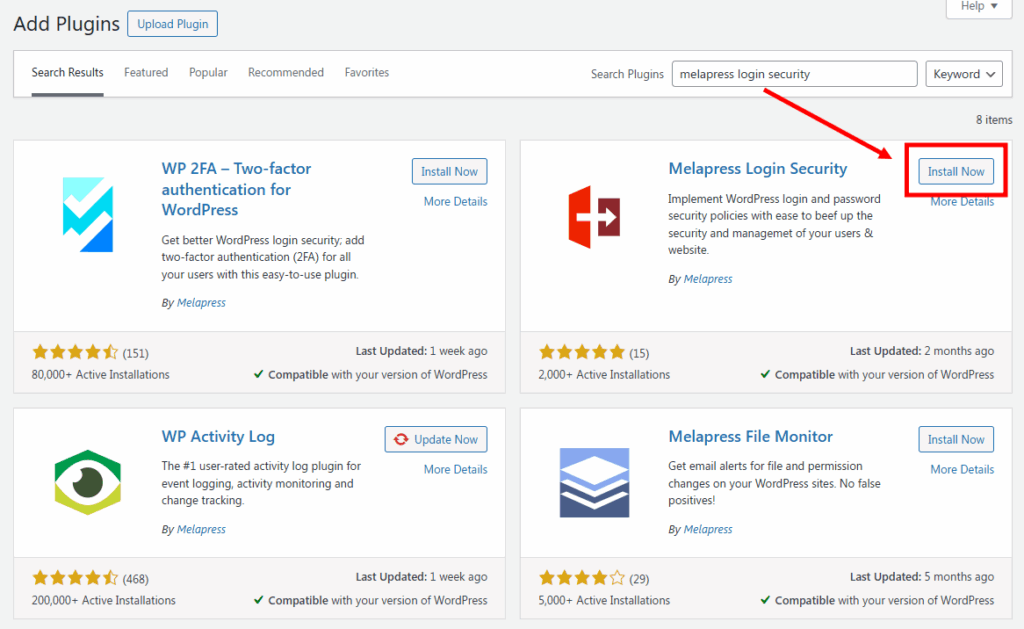
Or get a premium license here for extended functionality.
Once installed and activated, you can start tweaking the plugin settings to fit your security needs. You can set up some or even all of the security measures I explained above.
Other Steps You Can Take to Secure Your Login Page
Add 2FA to Your Login Form
Adding two-factor authentication to your login process significantly reduces the risk of hacked accounts. It sends a code to your mobile device or email, which you then enter, meaning a potential hacker would need to have both your user’s password and have access to their device/email account.
Use Cloudflare Against Bots
Cloudflare automatically blocks many malicious bots, reducing brute force attacks and DDoS attacks. Although the benefits aren’t limited to just login security, it helps prevent bot-related attacks on these pages and is a good addition to create a layered defence.
Have Monitoring and Alerts Set Up
Last but not least, setting up monitoring and alerts using a WordPress audit log of some kind helps you detect failed login attempts as well as potential successful breaches.
Detecting security incidents and breaches is an important yet often overlooked aspect of securing user accounts. It ensures you know which accounts are logged in and when, enabling you to retrace a hacker’s steps and identify what went wrong in case of a breach.
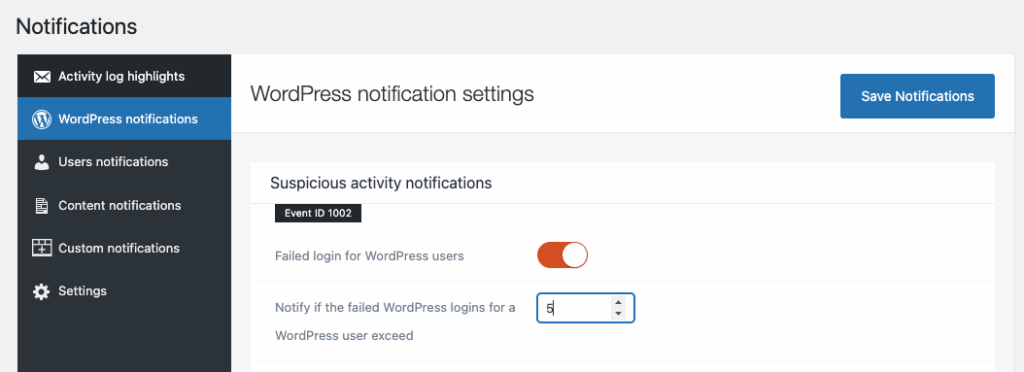
WordPress Login Security Doesn’t Have to Be Hard
Securing your WordPress login page doesn’t need to be complicated. While there are many different approaches you can take to accomplish this, using Profile Builder and Melapress Login Security gives you a solid foundation that not only secures your login but ensures your users enjoy a seamless experience without intruding on established processes.
With these two plugins, you can:
- Control how people log in and register.
- Verify user identities with 2FA, reCAPTCHA, and approvals.
- Restrict who can reach your login page.
- Enforce strong passwords and login attempt limits.
- Recover quickly if something goes wrong.
This simple, layered defence protects your site from common attacks for better security and peace of mind.
FAQs
Can I protect my login page without hurting the user experience?
Yes! The steps outlined in this guide show you exactly how to protect your login page while also ensuring a seamless user experience. This ensures your site is both secure and functional for users.
Can I protect the WordPress login page without a plugin?
If you want to protect the WordPress login page without a plugin, you can use the .htaccess file along with .htpasswd to set up password protection at the server level. You will need to SSH into your server and create both files in the wp-admin directory. Keep in mind, however, that this approach does not offer the same multi-layer protection that the plugins mentioned in this post do.
What happens if users can’t access their 2FA?
Quality 2FA plugins include a secondary 2FA authentication method that users can fall back to if their primary method becomes inaccessible. For example, if a user is using a 2FA app and their phone runs out of battery or is lost, the user can request a one-time code via email or use a backup code to log in.
Will the steps in this post prevent all hacks and brute force attacks targeting my login pages?
Although following the steps in this guide ensures your WordPress login page is well protected, it’s impossible to completely prevent all forms of attacks. That being said, the chances of an account getting hacked via the login page when you follow these steps are very small.


